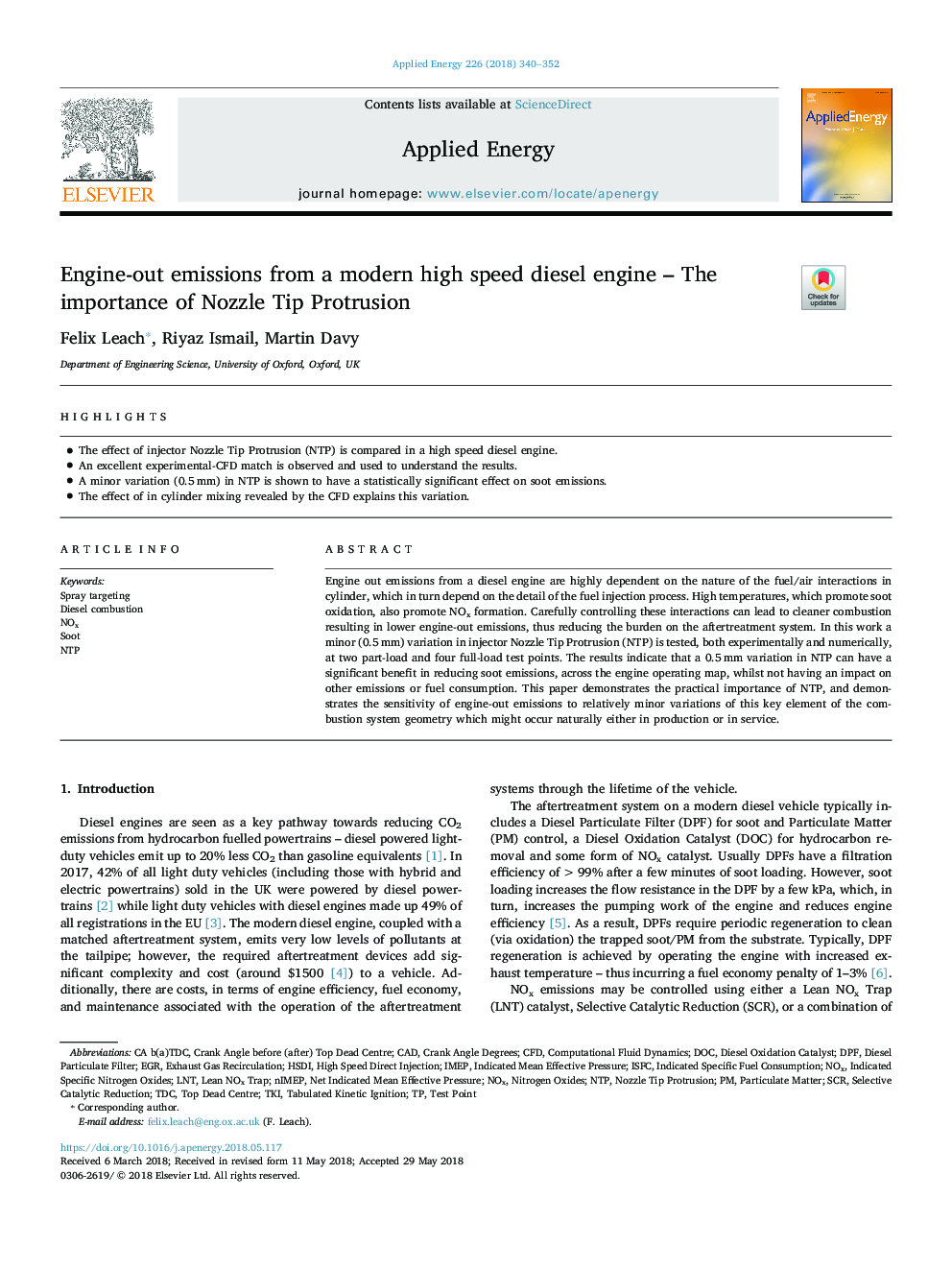| Article ID | Journal | Published Year | Pages | File Type |
|---|---|---|---|---|
| 6679744 | Applied Energy | 2018 | 13 Pages |
Abstract
Engine out emissions from a diesel engine are highly dependent on the nature of the fuel/air interactions in cylinder, which in turn depend on the detail of the fuel injection process. High temperatures, which promote soot oxidation, also promote NOx formation. Carefully controlling these interactions can lead to cleaner combustion resulting in lower engine-out emissions, thus reducing the burden on the aftertreatment system. In this work a minor (0.5â¯mm) variation in injector Nozzle Tip Protrusion (NTP) is tested, both experimentally and numerically, at two part-load and four full-load test points. The results indicate that a 0.5â¯mm variation in NTP can have a significant benefit in reducing soot emissions, across the engine operating map, whilst not having an impact on other emissions or fuel consumption. This paper demonstrates the practical importance of NTP, and demonstrates the sensitivity of engine-out emissions to relatively minor variations of this key element of the combustion system geometry which might occur naturally either in production or in service.
Keywords
IMEPLNTNTPEGRNet Indicated Mean Effective PressureDOCDPFTKITDCISFCHSDINOxDiesel combustionNitrogen oxideslean NOx trapCrank angle degreesSootCFDComputational fluid dynamicsparticulate matterCADDiesel particulate filterTop dead centreIndicated Specific Fuel ConsumptionIndicated mean effective pressurediesel oxidation catalystSelective catalytic reductionexhaust gas recirculationSCR
Related Topics
Physical Sciences and Engineering
Energy
Energy Engineering and Power Technology
Authors
Felix Leach, Riyaz Ismail, Martin Davy,
